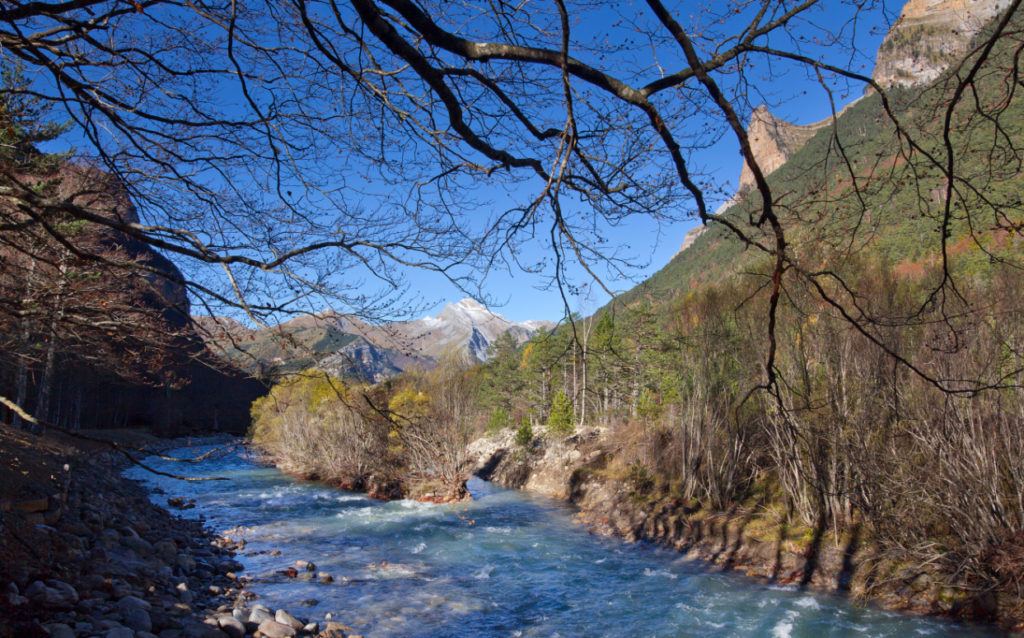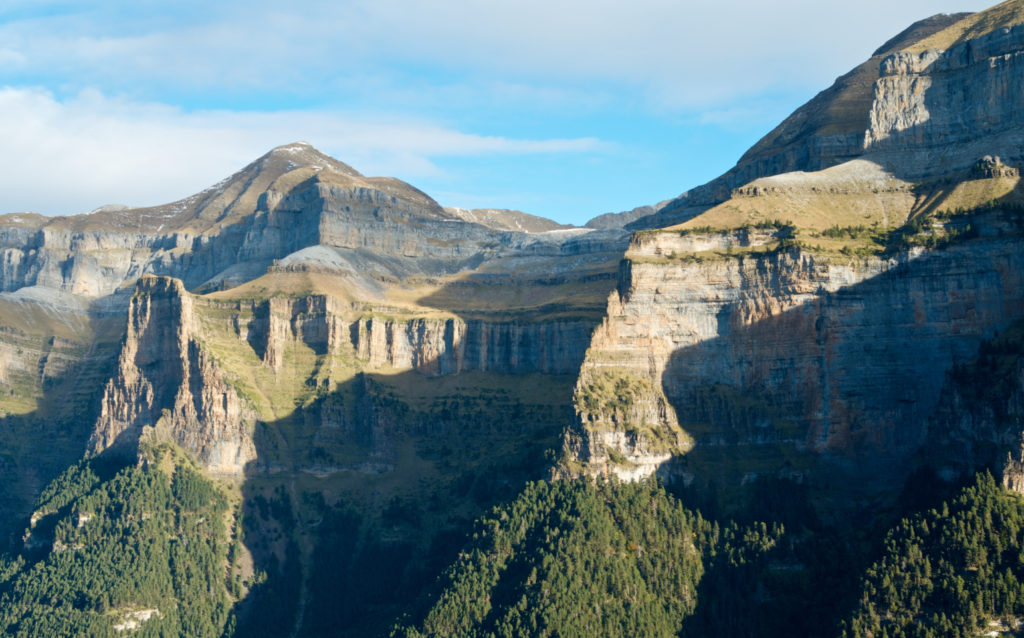Spain is a country renowned for its diverse landscapes and rich history, so it comes as no surprise that it is home to a remarkable collection of national parks. From the rugged peaks of the Picos de Europa to the volcanic landscapes of Timanfaya, each park captures a new perspective of Spain’s natural beauty. Whether you’re an avid hiker, wildlife watcher, or simply looking for a scenic getaway, you should consider a visit to Spain’s best national parks. Keep on reading to find out what some of the most breathtaking national parks in Spain have to offer.
Monfragüe National Park
Monfragüe National Park, which lies at the heart of Extremadura, is pure paradise for birdwatchers and hikers. This 18,000-hectare park is characterized by its rolling hills, boulder peaks and the meandering Tagus River. The landscape is a mosaic of Mediterranean scrubland, oak woodlands and rocky outcrops, which support an impressive array of wildlife. The park is particularly famous for its birdlife, including the Spanish imperial eagle, griffon vulture and black stork. From viewpoints such as Castillo de Monfragüe and Salto del Gitano, you will have spectacular views and opportunities for birdwatching.

The national park’s geological features include ancient quartzite ridges and deep gorges carved by rivers. The park’s flora is typical for the Mediterranean climate, with cork oaks, holm oaks, junipers and aromatic shrubs. Trails, such as the „Ruta del Castillo,“ take hikers through the diverse landscapes, with the chance to see the park’s fauna and enjoy breathtaking panoramas. Monfragüe is also culturally significant, with prehistoric cave paintings and the ruins of a 9th-century castle found within its boundaries.
Unique in Spain for its extensive bird life, Monfragüe has been declared a Biosphere Reserve by UNESCO. The park’s biodiversity and conservation efforts make it a global example of sustainable nature tourism. The best time to visit is spring or fall when bird migration is at its peak. It is easily accessible from the cities of Plasencia and Trujillo and can be explored both by car and, of course, on foot.

Picos de Europa National Park
Picos de Europa, which stretches across Asturias, Cantabria and Castile and León, embodies Spain’s geological grandeur. Covering more than 64,000 hectares, the park is shaped by dramatic limestone peaks, deep gorges and lush valleys. The park’s highest peak, Torre de Cerredo, stands at 2,650 meters and includes challenging climbs for mountaineers. Meanwhile, the park offers even more diverse landscapes, with alpine meadows, beech forests, and high mountain lakes, such as the iconic Covadonga Lakes.

The park’s animal life is as varied as its landscapes, with species like the Cantabrian brown bear, Iberian wolf and chamois roaming the lands. Amateur ornithologists will love trying to spot the Golden Eagle and the Wallcreeper that call Picos de Europa their home. The Cares Gorge Trail is one of the park’s most famous hikes, winding through breathtaking scenery. But if you want to skip the hikes, take the Fuente Dé cable car for a quick ascent into the heart of the mountains.

Picos de Europa’s unique karst topography has created an underground world of caves and potholes, some of the deepest in Europe. And the natural wonders, the park is known for its rich cultural heritage, from traditional mountain villages to the historic sanctuary of Covadonga. Recognized as Spain’s first National Park, Picos de Europa holds a special place in adventurers‘ hearts.
The best time to visit is from late spring to early fall when the weather is milder. The park is accessible from several towns, including Cangas de Onís and Potes. Aside from driving, you can explore Picos de Europa National Park by hiking and riding the cable car.
Ordesa National Park
The Ordesa National Park, located in the Aragonese Pyrenees, is a landscape painter’s dream. Covering over 15,000 hectares, the park is renowned for its towering cliffs, cascading waterfalls and glacial valleys. The park’s centerpiece, the Ordesa Valley, is a spectacular glacial formation framed by soaring cliffs. Monte Perdido, the park’s highest mountain, reaches an elevation of 3,355 meters and is a favorite among mountaineers.
The park’s diverse ecosystems support various animal and plant life. It’s a sanctuary for species like the Pyrenean chamois, the bearded vulture and the elusive Pyrenean desman. Hiking trails, such as the Faja de Pelay and the Ordesa Valley Route, reveal spectacular views and let you get close to the park’s natural wonders. Another highlight for many visitors are Ordesa’s waterfalls, among them the impressive Cola de Caballo.
Ordesa’s flora is a mixture of Atlantic and Mediterranean species, with beech, pine and fir forests and its unique geological formations, such as the Añisclo Canyon and the Góriz Cirque, are of considerable interest to geologists. As it was established in 1918, Ordesa National Park additionally carries the distinction of being one of the oldest national parks in Spain, created in 1918.

The ideal time to visit Ordesa National Park is from late spring to early fall when the trails are most accessible. The entrance to the park is from the town of Torla-Ordesa. While some park areas can be explored by car, the best way to experience Ordesa’s natural beauty is on foot, traversing its myriad trails.
Sierra Nevada National Park
The Sierra Nevada National Park in southern Spain is a land of contrasts and extremes. It covers over 85,000 hectares and includes the highest peak in mainland Spain, Mulhacén, at 3,479 meters. The park’s landscape is a dramatic mix of snow-capped mountains, alpine meadows and deep ravines, and it is a hotspot for skiing in the winter and mountaineering in the summer.

With species as endemic as the Sierra Nevada violet and the Spanish ibex, the park’s biodiversity is remarkable. Bird watchers can observe species like the Golden Eagle and the Alpine Accentor. Moreover, the park offers a range of activities, from hiking the Sulayr long-distance trail to exploring the Hoya de Pedraza Botanical Garden.

The unique alpine ecosystem of the Sierra Nevada is of great scientific interest, and the park also has a rich cultural heritage with traces of ancient Roman and Moorish influences. It’s truly a place where nature and history intertwine, delivering a multifaceted experience.

The park can be visited all year round, with each season bringing a different charm. It’s accessible from Granada and can be explored by car, on foot or even on skis during the winter months.
Timanfaya National Park
Timanfaya National Park, located on the island of Lanzarote in the Canary Islands, is a landscape forged by fire. Covering over 5,000 hectares, the park is shaped by the island’s volcanic activity, with lunar-like terrain, craters and lava fields.

The park’s flora and fauna have adapted to the harsh volcanic environment, with species like the Timanfaya lizard and unique lichens. The park offers guided tours, including the popular Ruta de los Volcanes, which will take you through the heart of the volcanic landscape.

Timanfaya’s geothermal activity is not only a natural spectacle but also a source of renewable energy. To that end, the park’s El Diablo restaurant uses geothermal heat for cooking, which is only one example demonstrating possible sustainable practices.

The best time to visit Timanfaya is during the cooler months of October through April. The park is accessible from several points on Lanzarote, with guided tours being the preferred way to explore its volcanic terrain.
Tablas de Daimiel National Park
Located in the province of Ciudad Real, the Tablas de Daimiel National Park is an oasis in the heart of La Mancha. It covers over 3,000 hectares and is one of the last remaining wetlands in Europe, formed by the confluence of the Guadiana and Cigüela rivers. The park is also a paradise for birdwatchers, with species such as the Purple Heron, the White-headed Duck and the elusive Marbled Teal.

The park’s boardwalks and viewpoints invite visitors to appreciate the tranquil beauty of the wetlands. The „Isla del Pan“ route is a favorite hiking trail through the park, offering close encounters with its aquatic and bird life.

Tablas de Daimiel’s importance goes beyond its biodiversity; it’s a vital ecosystem for water purification and flood control. The park’s efforts in sustainable tourism and conservation have earned it recognition as a Biosphere Reserve.
The best time to visit the park is in spring and fall when the migratory birds are present. Tablas de Daimiel is accessible from the town of Daimiel and can be explored on foot or by guided tours.
Cabrera Archipelago National Park
This marine and terrestrial paradise is the Cabrera Archipelago National Park, located off the southern coast of Mallorca. The park is made up of 19 islands and islets, of which Cabrera is the largest. Its crystal clear waters, rugged coastline and rich marine life make it the ideal destination for scuba divers and anyone who loves the sea.

The Cabrera Archipelago’s underwater world is a treasure trove of biodiversity, with species such as Posidonia oceanica seagrass beds that are key to maintaining the health of the Mediterranean ecosystem. The Blue Cave, accessible by boat, is a spectacular place for snorkeling.
Cabrera’s historic sights are as fascinating as its natural wonders, with the remains of a 14th-century castle and tales of pirates and captives. The park’s efforts in marine conservation have made it a model for sustainable tourism.
The best time to visit Cabrera is from April to October, when the weather is favorable for boating and water activities. The park is accessible by boat from Colònia de Sant Jordi, which offers day trips and guided tours.
Follow us on Facebook, Pinterest and Instagram for more travel tips and inspiration.
Lambus is your all-in-one travel companion designed to make your journeys seamless and unforgettable. It helps you organize your itinerary, document your experiences, and discover hidden gems along the way. With Lambus, your travel plans are simplified, allowing you to focus on the joy of exploration. Say goodbye to travel hassles and hello to hassle-free adventures. Try Lambus today and experience the difference!








